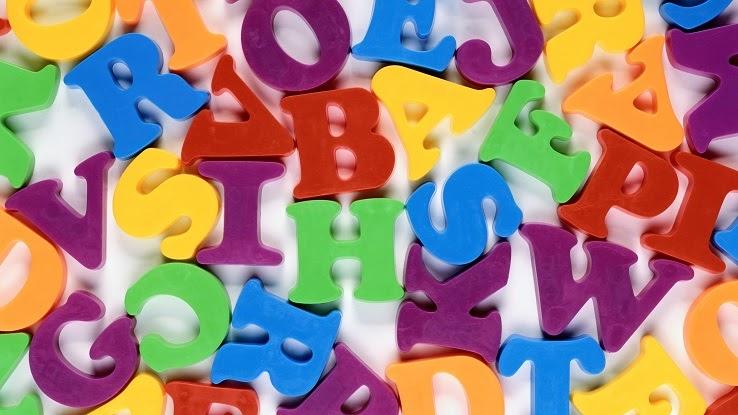Letter of Continued Interest Email Subject Line

Lines of symmetry are common in mathematics, but did you know that they also appear in the alphabet? In standard fonts, the letters A, M, T, U, V, W and Y each have a vertical line of symmetry that divides the letter into two corresponding mirror images. B, C, D, E and K have horizontal lines of symmetry. Both horizontal and vertical lines of symmetry occur in H, I and X. Meanwhile, F, G, J, L, N, P, Q, R, S and Z have no lines of symmetry.
What Is a Line of Symmetry?
The general definition of symmetry is when an object, image or shape has two exactly matching halves. Shapes with lines of symmetry retain total symmetry when divided along their centers vertically, horizontally or both. Within mathematics, a line of symmetry indicates an invisible border that, when drawn through a shape, divides that image into identical pieces that share the same dimensions.

Lines of symmetry appear in everyday applications. These lines are considered in the creation of roads, the development of buildings, clothing design, car production, artwork and much more.
Vertical symmetry refers to shapes that are completely symmetrical when folded vertically or split into vertical halves. According to the rules of traditional lines of symmetry, an object or image is said to have vertical symmetry if a vertical (upright) line can pass through the center of the image and create two identical halves.

Vertical symmetry can be observed in the majority of simple shapes, like squares, some triangles, circles, hearts, hexagons and octagons. For this reason, it can also be observed in a multitude of tangible objects and settings, including buildings, architecture, art and furniture.
Horizontal Symmetry
Horizontal symmetry follows the same rules as vertical symmetry, only along a horizontal axis. If a horizontal (sideways) line passes through a shape and creates identical halves on each side, that shape is said to have a horizontal line of symmetry.

In mathematics, horizontal symmetry is less common than vertical symmetry. Horizontal symmetry can be observed in squares, rectangles, circles and ovals, though not in stars, triangles, hearts or pentagons. Horizontal symmetry is also not encountered as often as vertical symmetry in everyday settings.
That said, horizontal symmetry is somewhat common when applied to the alphabet. Several words have horizontal symmetry when written in capital letters, such as BED, ICEBOX, HIDE, DECIDED, BIDE, KID, EXCEEDED, CHECK, BOOK and CHOICE. All of these words can be sliced in half horizontally to produce identical halves.
How to Find a Line of Symmetry
There are multiple ways to identify the line of symmetry in an item, shape or object. With two-dimensional shapes, you can find a line of symmetry by folding the image/object until both sides of the shape are completely aligned with one another. If the sides match up, you can identify that the shape has a line of symmetry; if they don't, you can determine that the shape is asymmetrical.

You can also use a ruler to draw a straight line through the center of a shape (horizontally or vertically) and observe both sides to determine if there are identical traits. With three-dimensional objects, you can achieve a similar effect using a mirror to find a line of symmetry.
Letters With Lines of Symmetry
In the alphabet, over half of all letters have lines of symmetry. In total, 16 out of 26 letters are symmetrical along either their vertical or horizontal axes. Letters that have vertical lines of symmetry include A, M, T, U, V, W and Y. Letters with horizontal symmetry are B, C, D and E. The letters K, F, G, J, K, L, N, P, Q, R, S and Z all do not have lines of symmetry.

The letter O is special, as it is the only shape that boasts unlimited lines of symmetry. This means that it can be cut through the middle or folded in half in any direction and result in two identical halves, including diagonally (known as diagonal lines of symmetry). This also means that it has perfect rotational symmetry, a concept we'll explore more in a following section.
Some letters' lines of symmetry only apply to their capital forms. For instance, the lowercase versions of the letters a, b, d and e all lose their lines of symmetry in lowercase. Handwriting and font types can also impact lines of symmetry. For instance, certain fonts write the letter U with a small tail on the right side or the letter M with a top-left tail, while others write them with a smooth curve or uniform point. Letters with tails or embellishments may lose their lines of symmetry, while fonts that produce uniform letters retain them. On this note, some letters keep their lines of symmetry even when made lowercase, no matter the font. These letters are c, o, v, w and x.
Letters With Two Lines of Symmetry
Only three of the 16 letters with lines of symmetry have both vertical and horizontal lines of symmetry. Those letters are the capital versions of H and I and both the capital and lowercase versions of X/x. Whether they're cut in half vertically or horizontally, this creates two identical halves.

However, lowercase h and i break the double symmetry. Lowercase h loses both lines of symmetry, as it no longer produces a mirrored image on either invisible axis. However, i loses only its horizontal symmetry, as it can still be split into symmetrical halves along its vertical axis.
Which Letters Have Rotational Symmetry?
Letters with rotational symmetry are those which, when rotated 180 degrees around their centers, resemble their original forms at any point throughout the rotation. The letters that have rotational symmetry are H, I, O, S, X and Z. These letters retain the image of their original form, even when flipped on their heads.

Again, if a letter is lowercase, capitalized or written in a distinctive font, this can impact whether or not it maintains rotational symmetry. Letters that lose their rotational symmetry when made lowercase are h and i, while o, s, x and z all keep their rotational symmetry in either form.
Source: https://www.reference.com/world-view/lines-symmetry-found-alphabet-letters-5fb6582e553eb249?utm_content=params%3Ao%3D740005%26ad%3DdirN%26qo%3DserpIndex&ueid=4ba2a68c-1357-477d-8a96-222acd2071ad
0 Response to "Letter of Continued Interest Email Subject Line"
Post a Comment